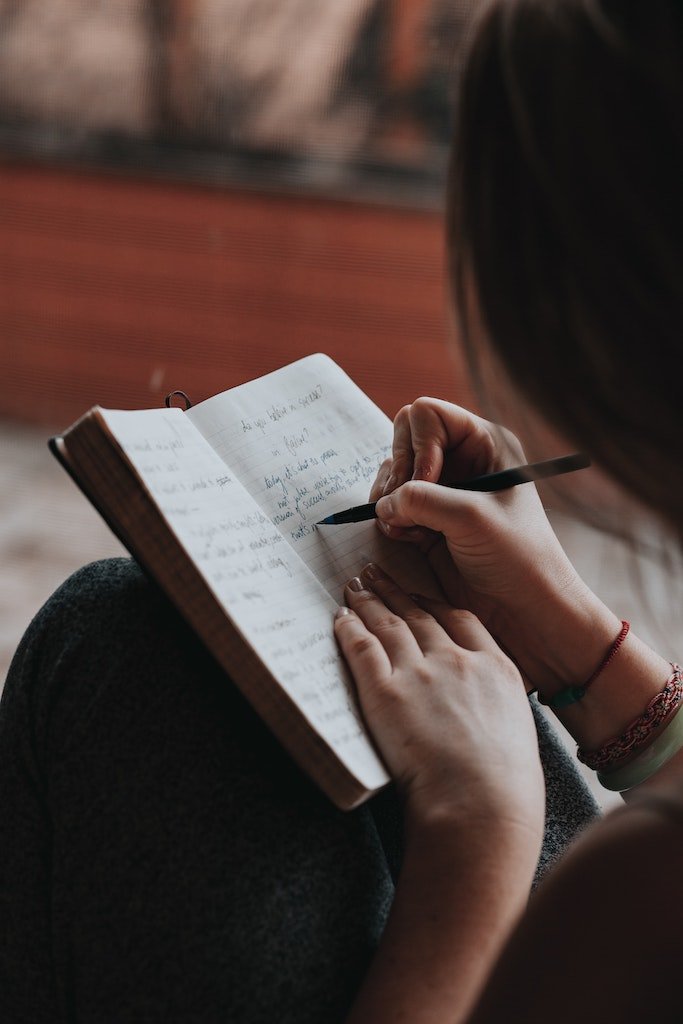How to read non-fiction

‘She’s defacing books! Stop her!’
Slowly looking up, I smiled. Laughing it off. It wouldn’t be the first time I’ve noticed people watch on wide-eyed and open-mouthed, dumbfounded as they see me write in the book I’m reading. Highlighting sentences or heaven forbid turning a page corner over.
‘I don’t get it, why are you writing in a book? Aren’t you meant to read books?’
‘This is how I read books.’ I replied.
You see, I used to think the same. I used to believe that books should bekept in pristine condition. Read, but not looking like they’d ever left theshop.
I had mad skills. I could read a book without creasing the spine or ruffling a cover. I’d crack the pages open just enough to let the light in, twisting and turning my head to read the words without even opening the book fully. I’d think it was a success if I could read the book yet still allow it to look brand new.
Oh, how things have changed.
You’ll now find me underlining, highlighting, scribbling in the margins,turning pages, and once or twice I’ve even been known to rip a few pages out ofa book. I wanted to hold the words and move them from the bounds of a cover andstick them on my wall, or in my notebook. I wanted to hold the passage of textas a gift.
What about you? How do you read non-fiction books?
I used to think getting crumbs in the pages meant my book was uncared for and disrespected, but now I know it means a book was well-loved; it was really read and enjoyed as I sat in a cafe, watching the world go by.

So what changed?
There is the old adage that says we only remember 10% of what we read, I dida little research and it shows it can be even less than that, and it can bemore. It’s hard to find the facts, but either way, it’s nowhere near 100%. Noteven close to 50%.
This worries me.
I love reading non-fiction books and sinking into new world views.Non-fiction lets me see the world from someone else’s shoes. It lets me learnfresh ways of thinking, and it helps spark ideas. Developing my creativity andrefilling my creative well.
But if we don’t remember so much of what we read, what’s the point? Why readso many books, why not just watch TV?
We remember the bright covers and the highlights. We might roughly remember the storyline or the premise, but do we remember the details? The sentence that made us cry or nod in agreement. The parts the author wrote that made us feel seen and heard? The images that were made crystal clear through sentences. Black on white yet colour fills our minds. That’s incredible to me.
But we forget. We close a book. Tick it off our list and shove it on theshelf.
Looking at my books, I remember which ones I loved, but sometimes I can’treally tell you why. I might remember when and where I read it and I mightpromise I’ll read it again, but with so many books in the world, enough booksto last hundreds of lifetimes, there must be value in trying to remember moreof what we read.
I’ve started reading a lot of books, but I didn’t want to just stack up a pile of books I’ve read without remembering. So, I now make a conscious effort to remember what I read. To really understand how to read non-fiction. More than that though, I wanted to learn from what I was reading and to that knowledge has to be implemented and retained.
How to remember what you read
These are my tried and tested methods of remembering what you read.
- Highlight or underline the words, ideas and sentences that stick out to you as you read. This means you can come back to them and quickly skim the book to get the overall message. It means you don’t have to read the full text again.
Also, what a gift to the next person who reads the book! I love nothing more than buying a second-hand book that someone has already highlighted and underlined! It’s the prize. You might not agree with the parts they’ve highlighted, but it’s so personal and inspiring to be able to see into someone else’s interpretation of the text, to see the parts that made their heart sing.
- Write in the margins! Often when we read non-fiction it sparks so many ideas and thoughts. Jot these down in the margin next to the sentences that provoked them.
Ryan Holiday talks about this on his blog. He calls it marginalia. Which turns out to actually be a thing. Writing in book margins? I’ve found my people! This makes reading an active practise, it’s not just about passively consuming more content, it’s about applying it to you, and really understanding it.
- Copy out what you’ve learnt and highlighted. This could be quotes, sentences you loved, ideas that made you feel excited, or the notes you’ve made in the margin.
If you do this with every non-fiction book you’ve read, you’ve then got a notebook, which is the sum of all the books you’ve read. How amazing is that? Years of reading a lifetime’s work, condensed into one book? You can categorise ideas or quotes and come back to your notes time and time again. It’s great for a dose of inspiration, it’s great for idea boosting, and it’s a great way to consolidate your learning.
- Write a short book review and list what you’ve read each year. I’ve started to do this to help me remember the details of a book and helps me decide if I would recommend it to a friend. Having a list of what you’ve read it also a lovely way to record how you’ve passed your time.
- Put into the practise the truths you’ve learned. If you’ve read a book about building habits, why not put into practise some of the suggestions? after all, you’ve done all the work, reading the book. Why not try out some of the activities or suggestions? Or even better, why not teach someone else? Have you heard of the 50/50 rule? Thomas Oppong talked about this in his popular article on Medium, retaining what we learn can be possible – "A better way to learn, process, retain and remember information is to learn half the time, and share half the time."
This is this best advice if you want to write too. You need to be readinglike a writer and this means paying attention to the books and the words thatfeel good and inspire you. Notice what works on the page.
Isn’t reading for fun?
Of course, you don’t have to do any of these things, you can sit down andread, immersing yourself in the present moment. But I’ve found physicallyengaging in the text, looking up words when I don’t know what they mean, it’steaching me so much more and I’m enjoying what I’m reading even more. I’munderstanding it, I’m letting it sink into my skin.
Oh, and if you are looking for a newnon-fiction book to read, I can help.

